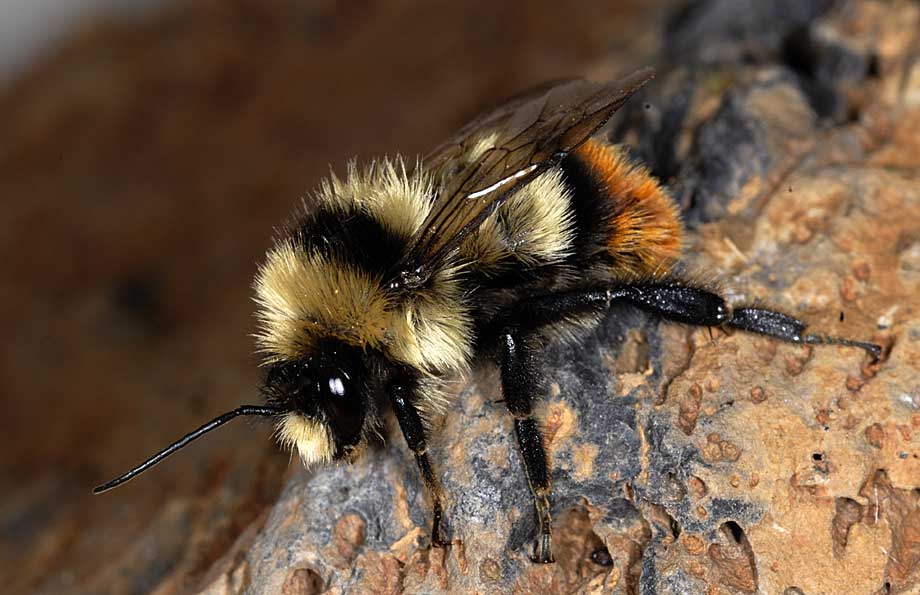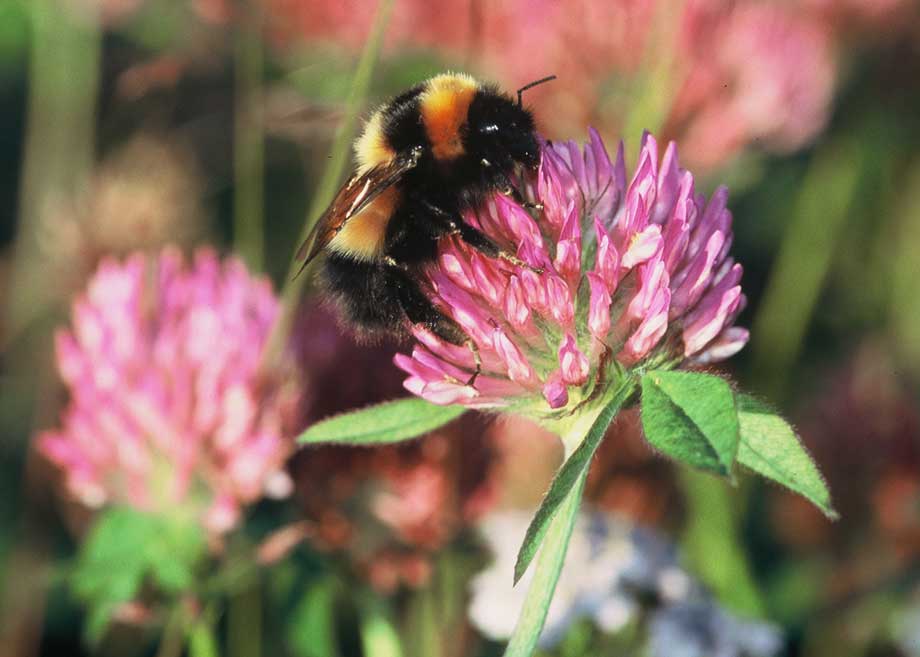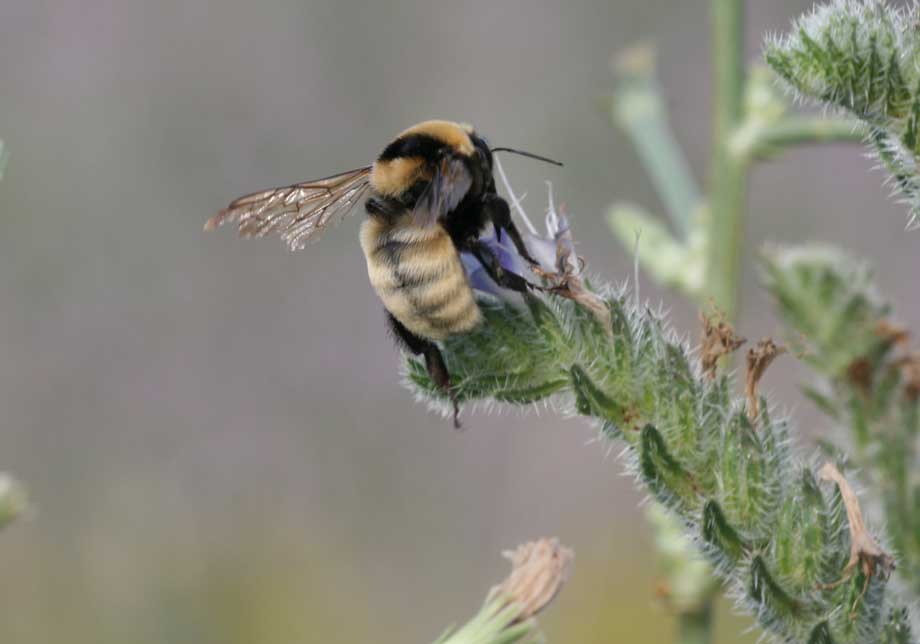Europe’s Bumblebees Are Going Extinct
By Marianne de Nazareth
03 April, 2014
Countercurrents.org

Their striking yellow and black stripes, larger size than honey bees and loud buzzing sounds make them seem slightly fearsome. But twenty four percent of European bumblebee species are threatened with extinction on The IUCN Red List of Threatened Species, according to a recent study assessing the species group at the European level.
Bumblebees live in small nests of up to 200 and do not make honeycombs. Some bumblebees are commercially bred to pollinate tomatoes, peppers and aubergines in greenhouses.
But most important they are wild, form short-lived social colonies and construct their own nests in cavities in hedgerows, under rocks, or in disused mouse or birds nests. There are about over 200 species across the world and are docile and only sting if severely aggravated.
The IUCN study examines all of the 68 bumblebee species that occur in Europe. It is part of the Status and Trends of European Pollinators (STEP) project and the European Red List of pollinators, both funded by the European Commission.
Bumblebees, like other pollinators, play a critical role in securing food production. They allow plants to reproduce and improve the production of crops, such as tomatoes, peppers and many other types of fruit, vegetables and seeds that make up our diet. Of the five most important pollinators of European crops, three are bumblebee species. Together with other pollinators, bumblebees contribute more than 22 billion Euros to European agriculture per year.
“We are very concerned with these findings. Such a high proportion of threatened bumblebees can have serious implications for our food production,” says Ana Nieto, European Biodiversity Officer of IUCN and coordinator of the study. “Protecting bumblebee species and habitats, restoring degraded ecosystems and promoting biodiversity-friendly agricultural practices will be essential to reverse the negative trends in European bumblebee populations.”

According to the study, 46% of bumblebee species in Europe have a declining population, 29% are stable and 13% are increasing. Climate change, the intensification of agriculture and changes in agricultural land are the main threats to the species. Other reasons for their decline include pollution from agricultural waste and loss of habitat due to urban development.
“The plight of Europe's bumblebees is a problem that needs to be tackled on all fronts. The European Union recently banned or restricted the use of certain pesticides that are dangerous to bees, and is funding research into status of pollinators,” says Janez Potoċnik, EU Environment Commissioner. “However, efforts clearly need to be scaled up, not least through better mainstreaming of biodiversity into other policies, but also to raise awareness about the benefits that pollinators bring.”
”Many of these species live in very restricted areas and in low numbers,” says Pierre Rasmont, member of the STEP team and the IUCN Species Survival Commission’s Bumblebees Specialist Group. “They are often extremely specialized on their host plants, which makes them susceptible to any environmental change.”
Climate change, through increasing temperatures and long periods of drought, is responsible for major changes in bumblebee habitat. Bombus hyperboreus, the second largest bumblebee of Europe, listed as Vulnerable on the IUCN Red List, is strictly associated with Arctic and Subarctic regions and only lives in the Scandinavian tundra and in the extreme north of Russia. Climate change is likely to dramatically reduce the area of its habitat, leading to population decline.
Changes in land use and agricultural practices that result in the loss of the species’ natural environment also represent a serious threat to many bumblebees in Europe. The geographic range of the Critically Endangered Bombus cullumanushas shrunk enormously in the last ten years following habitat fragmentation and changes in farming practices which involve removing clovers – its main forage. As a consequence, its population has declined by more than 80% over the last decade. Previously widespread, it now only occurs in a few scattered locations across Europe.
Europe’s largest bumblebee, the Endangered Bombus fragrans, is also seriously threatened by the intensification of agriculture, which is destroying its native habitat in the steppes of Ukraine and Russia.
“The contribution of bumblebees to food security and the maintenance of wider plant biodiversity is an essential part of Europe’s natural capital,” says Simon Potts, Coordinator of STEP. “However, this capital is under increasing threat and the results of this Red List assessment represent an important tool to help protect an indispensable component of biodiversity.”
Measures such as increasing the margins and buffer strips around agricultural fields that are rich in flowers and wildlife and the preservation of grasslands are deemed effective tools in alleviating the rapid decline in bumblebee species. They can provide bees with forage and help underpin stable populations of pollinators, whose survival is crucial for European food security.
The assessment comes at a time when progress in implementing Europe’s strategy to halt biodiversity loss is under review. It stresses the need for conservation efforts to be stepped up and for the EU 2020 Biodiversity Strategy to be fully implemented in order to meet the 2020 biodiversity target to halt biodiversity loss and the degradation of ecosystems services, set by EU leaders in March 2010.

The study did not mention the possibility that honeybee diseases were spreading to bumblebees. A study in the journal Nature in February said that deformed wing virus, for instance, was found in both honeybees and bumblebees in Britain. The virus was more prevalent in honeybees, suggesting it was spreading from them to bumblebees.
"In general, we don't know a lot about bumblebee disease," Stuart Roberts, a member of the IUCN's global bumblebee assessment team, told Reuters. "Some of these threatened bumblebees are isolated, living in the Arctic or the Alps," he said. "In those places the chance of picking up a disease from a honeybee is almost nil."
The Arctic species Bombus hyperboreus, living in the Scandinavian tundra and Russia, is vulnerable because global warming is shrinking its habitat, the study said. Populations of the critically endangered Bombus cullumanus, now found only in France, have fallen by more than 80 percent in the past decade, apparently because of a reduction in the amount of meadows with clover, its favourite forage, the study added. Only queen bumblebees survive the winter.
Honeybees, living in longer-lasting colonies of thousands of bees, make honeycombs largely to ensure that the insects have food to survive months with no nectar-making flowers.
(Marianne is a Freelance science and environment journalist and adjunct faculty, St Joseph’s College of Media studies, Bangalore.)
Comments are moderated
